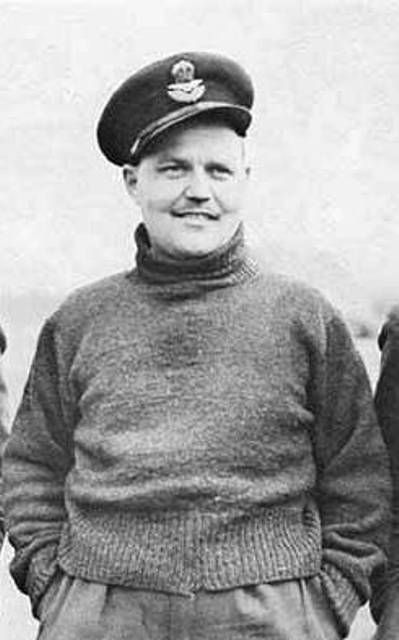Saturday 25 May 1940
 |
| Refugees in France, May/June 1940. |
However, these arguments always ignore concomitant massive confusion on the Allied side. If you are going to "smooth out" imperfection on one side, consider also the other side of the equation. French Commander-in-chief Weygand plans on 25 May 1940 a concentric attack on the panzer spearhead across northern France. However, to implement it, he requires British cooperation, and that is not forthcoming. BEF commander General John Vereker Lord Gort cancels his part of the pincer attack at 17:00, and this causes Weygand, in turn, to cancel the entire thing amidst recriminations.
In this instance, from a military perspective only, Lord Gort is absolutely correct: the plan has no hope of success with the forces available. However, in a larger sense, it shows the futility of divided command, lack of respect and cohesion between the allied forces, and complete mismanagement by all concerned of this desperate situation. Everybody has an opinion, everyone is sure they are right, and wars are lost when every opinion counts. You need assured command to win wars, not independent crusading barons.
Flowing from Lord Gort's decision is another, larger decision: it is time to implement Operation Dynamo, the evacuation of the BEF. This is a hugely cynical - but absolutely necessary - determination that the Belgian Army must be abandoned, along with what remains of Belgian territory, in order to protect England (and maybe what remains of France). War Minister Anthony Eden has assured Lord Gort that the resources will be available - but this is such a massive operation that it will strain even the Royal Navy's abilities.
The Belgians are not stupid: the immediately see which way things are going. The Belgian 5th and 17th regiments surrender their bridgehead at Meigem against orders. There is a report of an incident of "fragging," where soldiers shoot their own officer ordering them to stop their retreat.
However, not all of the troops in Belgium have given up. The Chasseurs Ardennais deploy to Vinkt and fight off the German 56th Infantry Division like lions.
Things become desperate in Belgium as the men won't fight and the German tanks can't be stopped. The BEF troops are fighting for time, time to evacuate, and they will try anything. An improvised anti-tank line of wagons is set up along the rail line from Ypres to Roeselare.
The BEF uses the day to reinforce the port defenses at Dunkirk.
On the German side, the Hitler stop order remains in place for Panzer Group Kleist. However, that does not mean there is no fighting in that sector, not by a long shot. General Guderian leads from the front, and he addresses his men: "I asked you to go without sleep for 48 hours. You have gone for 17 days!"
The 2d Panzer Division finishes mopping up at Boulogne. The last British troops under Major J.C. Windsor Lewis of the Welsh Guards surrender at 13:00. Altogether, the Germans take about 5,000 British and French troops into captivity at Boulogne, where all resistance is now ended.
The 10th Panzer Division assault on Calais continues. General Guderian has given it until 14:00 on 26 May to take the port, so fighting is intense. Vice-Admiral James Somerville makes the hazardous crossing to the port during the night and meets with the local commander, Brigadier Claude N. Nicholson. Nicholson is optimistic but says he needs continued supply. An assortment of Royal Navy warships continues giving offshore fire support.
At dawn, the German bombardment resumes, and there is smoke and fire everywhere. Panzer General Schaal, sends a surrender demand to the mayor, André Gerschell, apparently for transmission to the military authorities. Nicholson, once he hears of it, refuses, then refuses another ultimatum in the afternoon. The Germans attempt a determined attack in the east which the 1st Rifle Brigade repulses at first at the Marck and Calais canals. Nicholson attempts a counterattack, which fails in the sand, and then the line at the canals falls. The troops on the east withdraw under fire through the city streets to the docks. The Germans also make progress in the southeast.
The wounded are piling up, and the defense is undermined by collaborators. The day ends with the British in control of only portions of the city, with some units already attempting to break out toward Dunkirk. Air attacks over the city is intense, with effective air cover by 605 Squadron and bombing missions by both sides. RAF claims to shoot down dozens of aircraft, including Ju 87 Stukas performing ground support missions.
The French launch an attack on Amiens that leaves them with part of the town.
In eastern France, French engineers are blowing up locks on the Rhine-Rhône canal in order to flood surrounding territory to block the panzers.
The Luftwaffe sinks Royal Navy destroyer Wessex off of Calais.
Royal Navy minesweeper Charles Boyes hits a mine in the North Sea and sinks.
The Luftwaffe drops mines off of southern England ports after dark.
Battle of the Atlantic: There is shore support by the Royal Navy at the Channel Ports. Destroyers HMS Grafton, Greyhound, Wessex, Wolfhound, Verity, and the Polish Okręt Rzeczypospolitej Polskiej (ORP) Burza. Wessex is sunk during the day by the Luftwaffe.
Convoy OG 31F forms off Gibraltar.
British aircraft carrier Illustrious is commissioned.
Norway: The German 2d Mountain Division closes up on the improvised British defenses as it advances through the Saltdal. They attack on the east side of the river. The line holds through the day, but the Germans shift their attack to the west side and make some progress.
Colonel Gubbins is informed about Operation Alphabet, the plan to evacuate Norway. This means there is no longer a reason for fanatical resistance since he has to fall back to Bodø to be taken off anyway.
At Narvik, the gradual reinforcement of Narvik continues, as the Luftwaffe drops another 99 mountain troops (for many, their first jumps) to reinforce General Dietl.
The Luftwaffe bombs RN Fleet Air Arm depot ship Mashobra near Narvik and it ultimately sinks.
Military Intelligence: A German staff car is captured with plans to attack between Menin and Ypres with two corps.
Soviet/Lithuanian Relations: Soviet Foreign Commissar Vyacheslav Molotov accuses the Lithuanian government of "provocations" after several Soviet soldiers go missing in the country.
French Military: While the vast majority of France remains safe behind the deceptively secure Maginot Line, frustration within the government is reaching the boiling point. The French Army relieves 15 Generals of their commands.
Belgian Government: Belgian Prime Minister Pierlot is in London for consultations with Foreign Minister Spaak. This is in part a demonstration to King Leopold of where they think that he (and the rest of the government) should be.
US Military: The US Navy conducts landing practices at San Clemente Island, California.
French Homefront: There are refugees not only from northern France but also from the eastern portions of the country. Lille is largely abandoned, with entire families carrying whatever they can of their possessions. There continue to be reports of the Luftwaffe strafing refugee columns, which is a war crime under any definition.
British Homefront: The BEF is expending massive amounts of ammunition, so ammunition plants have around-the-clock shifts.
 |
| The world is burning in Europe, but it is business as usual in the US. |
May 1940
May 1, 1940: British Leave ÅndalsnesMay 2, 1940: British Depart Namsos
May 3, 1940: Many Norwegians Surrendering
May 4, 1940: Bader Returns
May 5, 1940: HMS Seal Survives
May 6, 1940: Allies Focus on Narvik
May 7, 1940: In The Name of God, Go!
May 8, 1940: Exit Chamberlain
May 9, 1940: Enter Churchill
May 10, 1940: Fall Gelb
May 11, 1940: Eben Emael Surrenders
May 12, 1940: Germans at Sedan
May 13, 1940: Rommel at Work
May 14, 1940: German Breakout in France
May 15, 1940: Holland Surrenders
May 16, 1940: Dash to the Channel
May 17, 1940: Germans Take Brussels
May 18, 1940: Germans Take Antwerp
May 19, 1940: Failed French Counterattack
May 20, 1940: Panzers on the Coast
May 21, 1940: Battle of Arras
May 22, 1940: Attacking Channel Ports
May 23, 1940: British Evacuate Boulogne
May 24, 1940: Hitler's Stop Order
May 25, 1940: Belgian Defenses Creaking
May 26, 1940: Operation Dynamo
May 27, 1940: King Leopold Surrenders
May 28, 1940: The Allies Take Narvik
May 29, 1940: Lille Falls
May 30, 1940: Operation Fish
May 31, 1940: Peak Day for Dynamo
2020

No comments:
Post a Comment